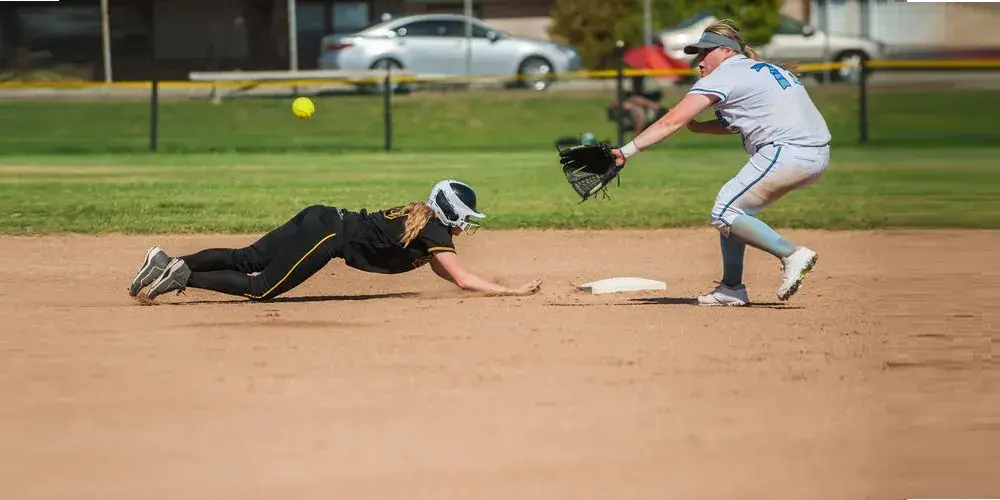
The softball backhand flip throw is generally used by the second baseman for a play at second, the shortstop for a play at third, a left handed first baseman for a play at first and possibly a catcher for a play at the plate on a ball that got passed her with a runner on third. It is a short and quick throw that is done as the fielder is getting up after fielding the ball.
This throw is a good alternative to the underhand toss and regular throw when time is limited and the distance is not too far.
Softball Backhand Flip Considerations
The purpose of the backhand flip is to get a throw off quickly after fielding it in a forward facing position from more than 5 feet away. There is usually not enough time to re position to make an accurate throw which makes the mechanics of this throw critical for success.
Distance from the receiver
The thrower in this case should not be more than 15 feet from the receiver. If she is too far, the ball will not get to its destination and might even go past the receiver because the thrower is trying too hard to get the ball to its destination without an error. The distance will dictate the amount of pressure put on the backhand flip. For example if the thrower is close, it is more like a soft flip because if she throws too hard the receiver will not be able to handle the ball. If she is 15 feet away she will need to push the ball more forcefully for a good hard throw to cover the distance.
Softball Backhand Flip Mechanics
Preparation
Because the backhand flip is done in a hurry, there is not much time for getting into any specific position for the throw. The important thing as with the underhand toss is to keep the upper body as low rather than standing up. The head turns towards the target and the shoulders and rest of the body remain in position for the throw as the weight is distributed. The feet can stay where they were as the ball was fielded. This will prevent the upper body from increasing the rotation to the side you are throwing to.
The advantage is that in fielding position, the infielder is already open to their throwing side because their throwing side foot is already slightly behind the fielding side foot so they are in a perfect position to get the ball to the receiver quickly. As the ball is fielded, the fielder is adjusting the ball in her hand knowing that she is going to be making a backhand flip throw.
By physically turning to the side, the flip will likely travel in the direction of the rotation and away from the receiver. This is why it is such a good alternative because there is no time for an accurate throw any other way. An underhand toss requires the body to be facing the receiver and a full out throw would be too hard and hard to handle. A quick throw would be useful if there is time for the thrower to quickly adjust their feet and turn their body to make that throw. Either way, the eyes must be on the target and the receiver must be at their position and ready to receive the throw.
Execution
Once the eyes are on the target, the throwing hand rotates in toward the body (pronating) as if you are turning a door knob to close it. While the hand is rotating, the throwing hand comes closer to the body before extending toward the target . The throwing elbow also rotates out pointing toward the target.
The ball is being easily held in the thumb and the index finger of the throwing hand. As the ball is flipped to the receiver, the thumb and index finger push the ball to the glove while extending the elbow as the ball is released.
Follow Through
Once the ball is released, the arm stops and almost freezes in mid air. By continuing the movement, you risk hanging onto the ball and flipping it over the receiver. The palm of the hand will then be facing the target with the fingers open. Once the ball is released then the thrower needs to read and react to the next play. It could be to back up another position or even to receive a throw.
This throw is a difficult one because the body is not necessarily in a natural position to throw. It takes coordination and many practice opportunities. The practice throws should be in game conditions and from various positions on the field. If executed correctly, this is a great tool for a quick out or the beginning of a double play.
